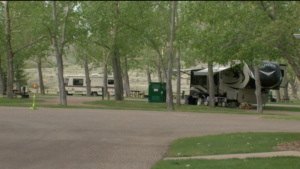Cranston Home Invasion: Understanding Its Impact and Lessons Learned

The sense of security within one’s home is fundamental to our well-being, yet unfortunate events occasionally rupture this sanctity. Such was the case with the Cranston home invasion, a distressing incident that not only shook a community but also prompted a reevaluation of safety measures and community support.
The Cranston home invasion, which occurred on [specific date], sent shockwaves through the tranquil neighborhood, awakening concerns about personal safety and community resilience. The incident, where individuals forcefully entered a residence, not only posed a threat to the occupants’ physical safety but also had profound emotional repercussions on the entire community.
The aftermath of the invasion sparked a collective response, emphasizing the importance of community solidarity and proactive safety measures. Residents, local authorities, and community leaders rallied together, initiating discussions on enhancing security protocols and fostering a stronger communal bond.
One of the pivotal aspects that emerged from this unfortunate event was the significance of fostering open communication among neighbors. The incident acted as a catalyst for the formation of neighborhood watch groups and initiatives aimed at bolstering communication channels. These efforts aimed to create a more vigilant environment where residents could promptly report suspicious activities, thereby fortifying the community’s protective shield.
Additionally, the Cranston home invasion prompted a surge in the adoption of advanced security technologies. Homeowners sought to fortify their residences with state-of-the-art security systems, including surveillance cameras, smart locks, and alarm systems. The emphasis on technology integration aimed not only to deter potential threats but also to provide a sense of assurance and peace of mind to residents.
Moreover, the incident led to an increased emphasis on educating residents about safety practices. Community workshops, seminars, and educational campaigns became commonplace, empowering individuals with the knowledge and skills necessary to safeguard their homes and families effectively.
Beyond the practical aspects, the Cranston home invasion highlighted the resilience and unity within the community. Acts of solidarity, support, and empathy were evident as neighbors came together to provide comfort and assistance to the affected individuals. This collective response underlined the strength of community bonds and reiterated the importance of standing together in the face of adversity.
As time passed, the Cranston home invasion became a turning point, inspiring positive changes within the community. It propelled a shift towards a more proactive, vigilant, and interconnected neighborhood, where safety is a shared responsibility.
Conclusion
While the incident itself was distressing, the response it invoked and the lessons learned were invaluable. The Cranston community emerged stronger, more prepared, and united in their commitment to ensuring the safety and well-being of every resident.
The Cranston home invasion served as a poignant reminder that amidst adversity, communities can band together, fortify their defenses, and emerge resilient, turning a moment of distress into an opportunity for growth and solidarity







